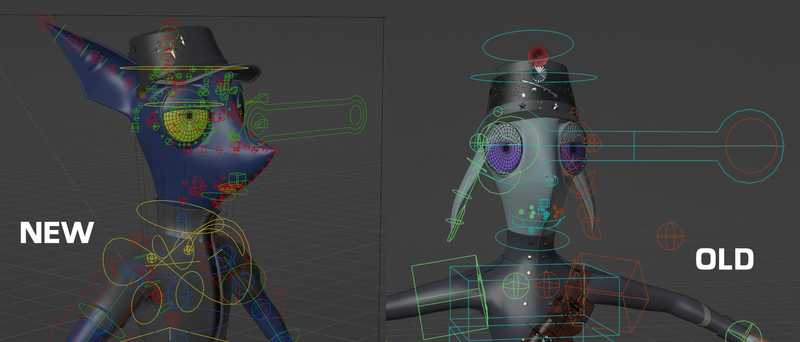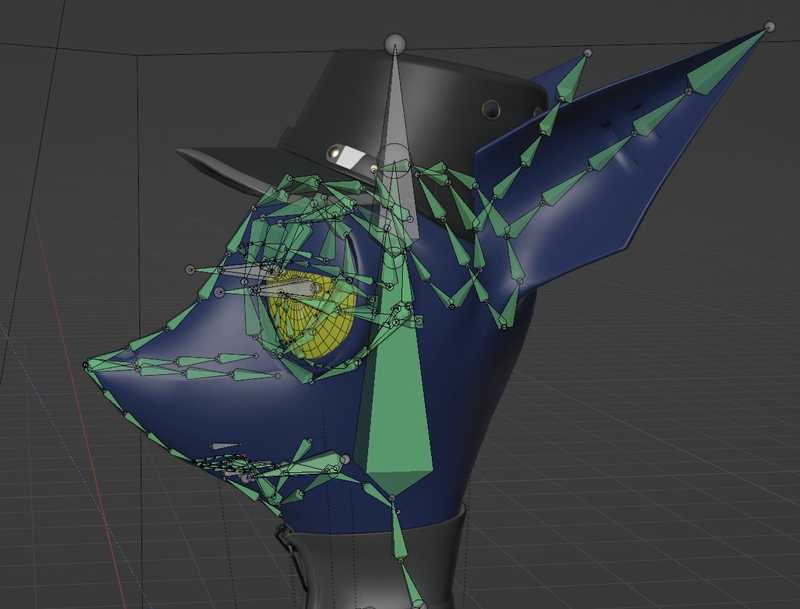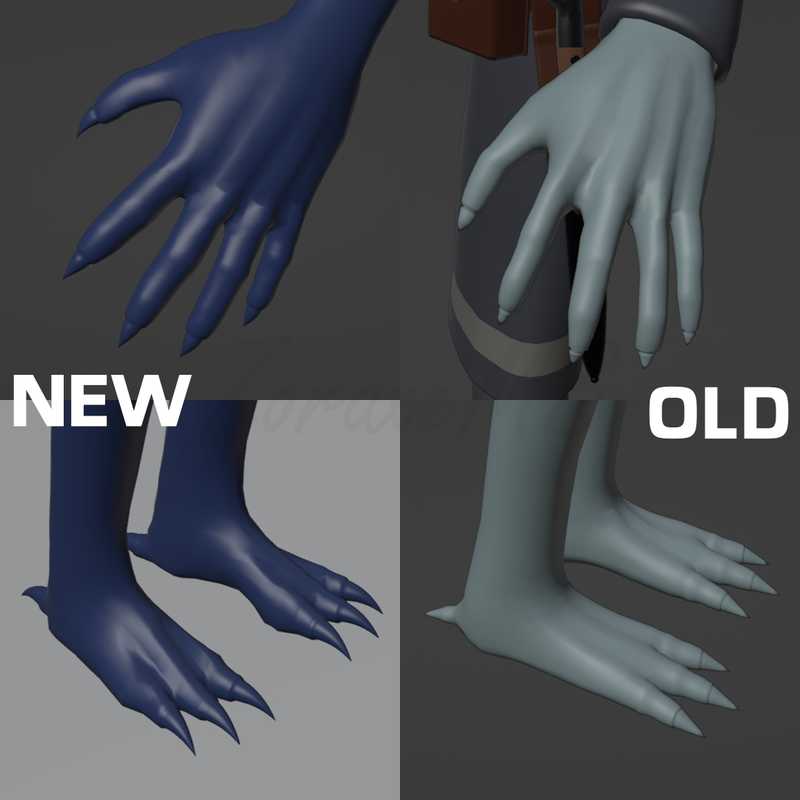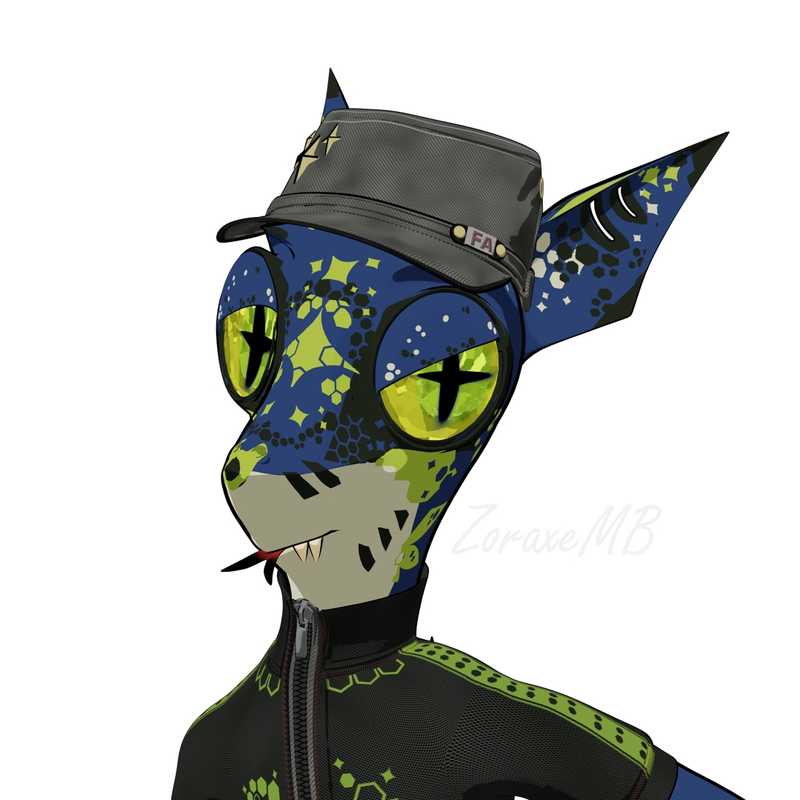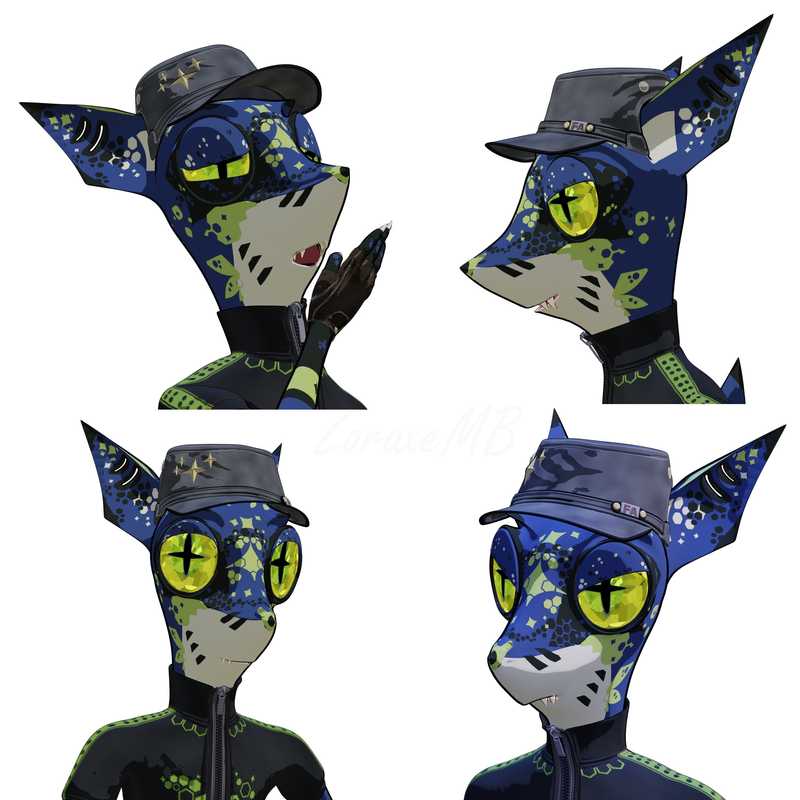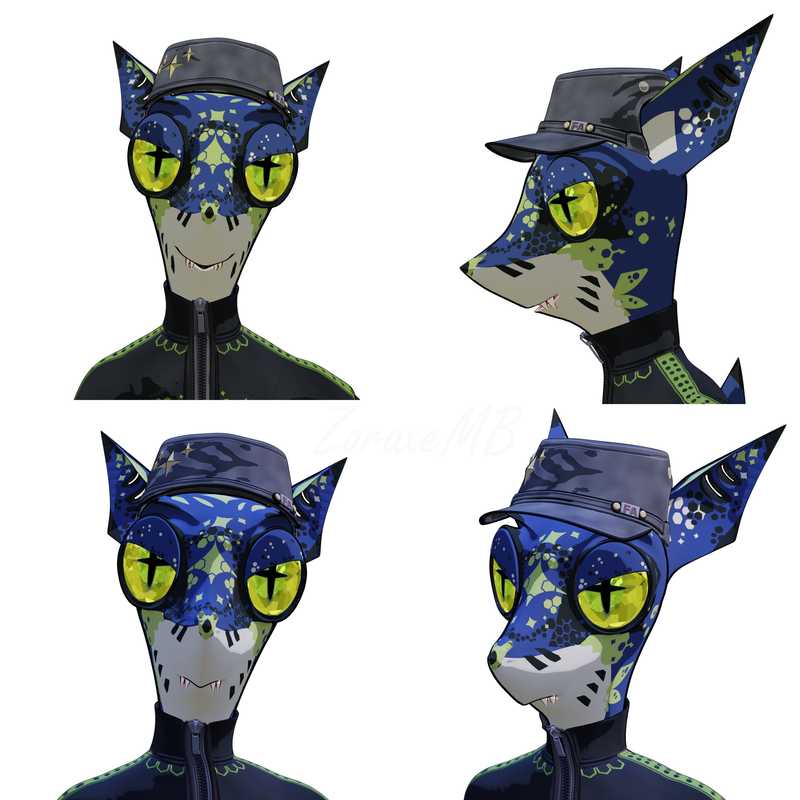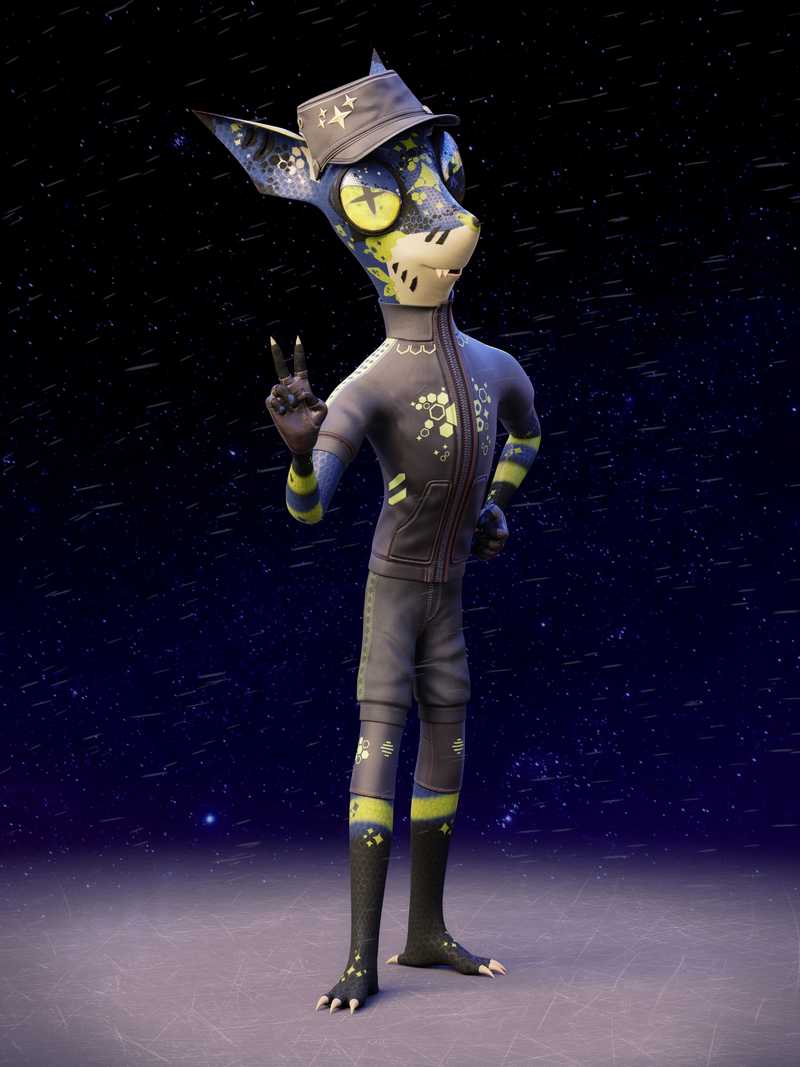Starlowe
Characters Rigging
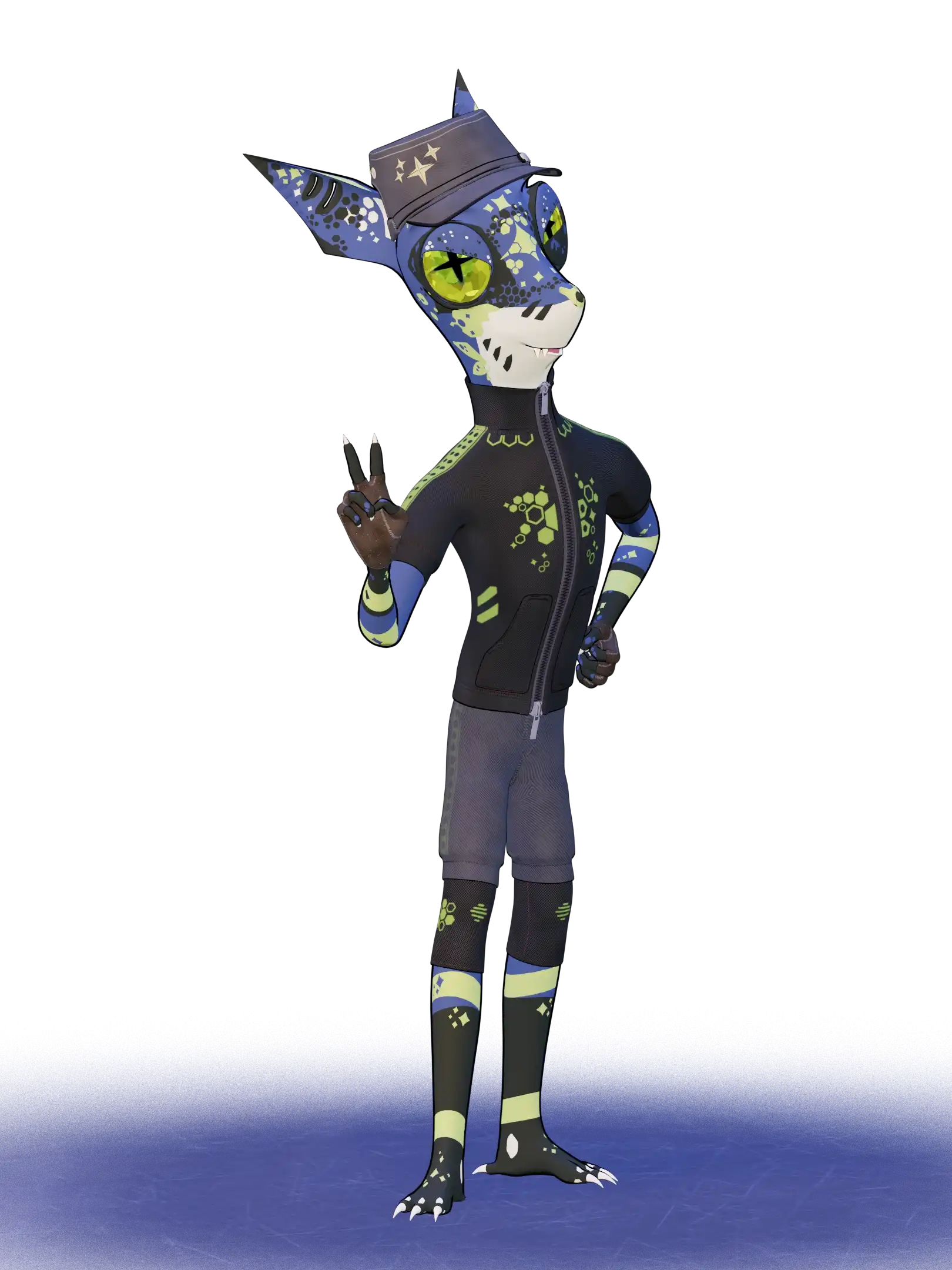
This is a more recent character made for thematically different purposes than many of my previous ones. He is meant to be a street racer and will soon serve as a sort of mascot for my own car. If you've ever seen graphical decals on a car, a 3D photorealistic style in most cases wouldn't visually suit it well especially for cars with character designs on them. So, I've focused more on a 2D render-style both for looks and for render speed (it's quite a lot quicker to churn images out than photorealistic ones).
Along with this character came big changes to my usual rigs. With most of my current characters, they use a rig from a paid-addon known as Auto-Rig Pro (ARP) as the base. Their facial rigs for the most part do not suit the unique facial anatomy on these guys, so I had to add additional facial and head bones myself. In those times, I used a lot of shapekeys to drive the facial expressions. Unfortunately, this limited my facial expressions down to a range of explicit motions, and more motions would require more shapekeys and rigging controls to be explicitly made. This might not be a problem for a single character, but it became a cascading issue when re-using the rig for another character. While I might not have to redo the placement of certain bones or controls due to the re-used rig, I would usually have to redo all the shapekeys over again. After about 7 characters of doing this and also finding out that shapekeys could not be exported to other software (like game engines), I finally decided to revise this set-up.
After a few years of non-use, I used Blender's Rigify addon to once again create my character rigs. It seems after all these years, their options for custom controls had expanded and became even more modular. Probably the greatest improvement came in their updated facial rigs which broke out a lot of the lip & jaw areas into their own modular pieces. From the base metarig and updated facial controls, I matched everything to the dimensions of the character. For the face, additional bone chains were added around the nose, eyelids, and ears. I changed the amount of bones for the lips to match exactly with the number of vertices on the mesh's lips.
After some adjustment and base testing, I wrote some additional python script that added extra constraints for the eyelids and lips to mate with custom controls upon rig generation. While not necessary to do for a single rig, the python automation allows me to more easily adapt to future characters as well as existing ones without having to manually add those special controls back in. Likewise, there were other custom properties & drivers that I frequently used for adjustment of the character materials from within the rig. Since that had been tedious to implement on several other characters, I finally decided to automate that process with more scripts.
Alongside this revision, I decided to fix some anatomical issues that have been present in these characters hands and feet. The hands have generally been slightly off in shape (especially the thumbs), and their claws also had awkwards differences in shape or size between fingers. The feet had similar issues. Finally, the resting position of the character was changed mostly for the arms. Instead of a relatively-close T-pose, the arms were relaxed down to give a more neutral position to the shoulders, and the hand-palms were rotated to face forward. Forward-facing palms put the forearm into an untwisted & neutral position and prevented the deformation difficulties in having to untwist to get to the same position.
All other processes to finish the character were fairly standard, though there was definitely more time spent on the texture painting process than I'd usually commit to. And with that, Starlowe was complete!
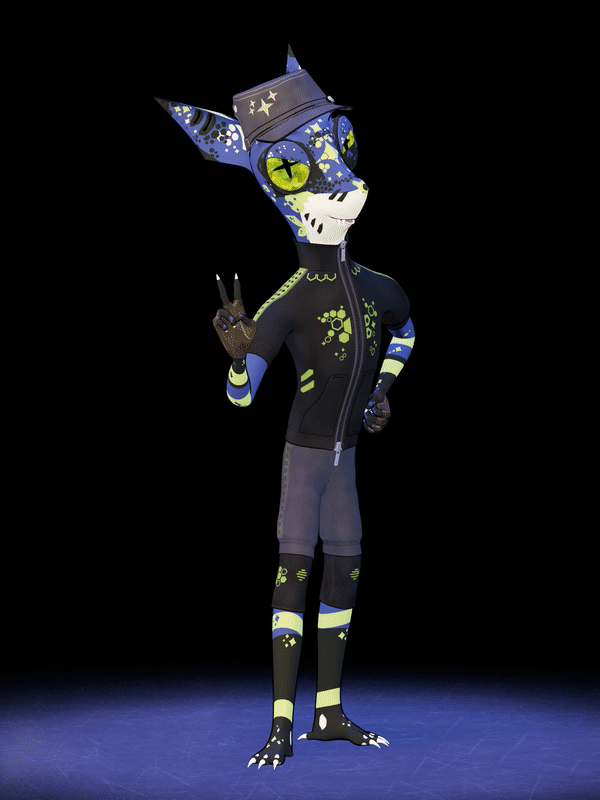
To really test the capabilities of the new rig and its facial controls, I tried out a few expressions (with some varying lighting between them).
With two examples, I had also tried some front-facing views. I find direct front views to be a bit awkward-looking, but that seems more likely to be the case with non-human characters.
Nonetheless, no matter how many times I commit to the process or struggle with revisions, there is no better joy than getting unique life-filled results.
As a bonus, here's a more typical PBR render-style for Starlowe.
Character made in Blender, most renders done with the Eevee Render Engine. The last image was done with the Blender Cycles Render Engine.
